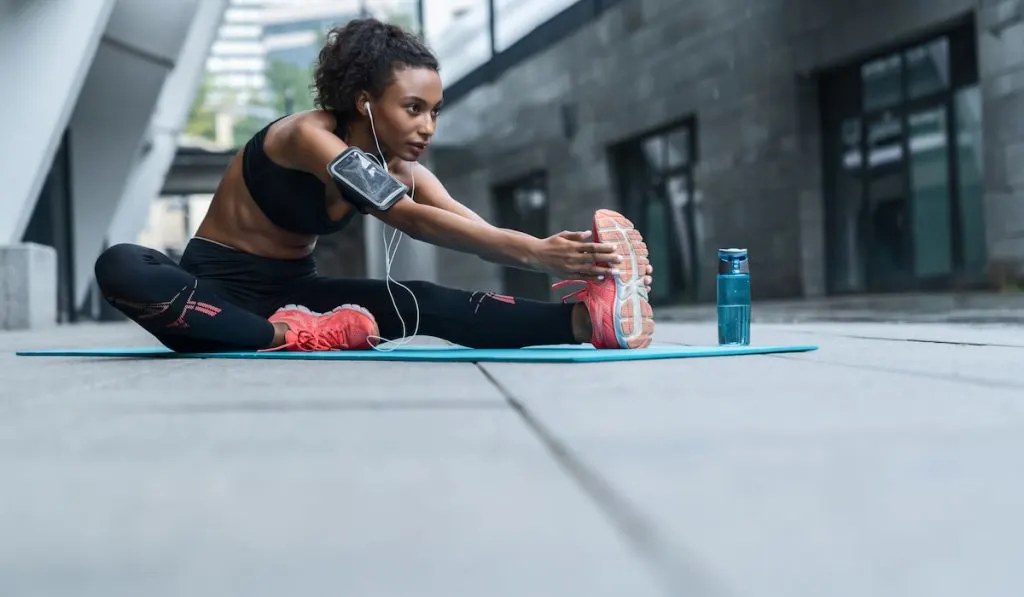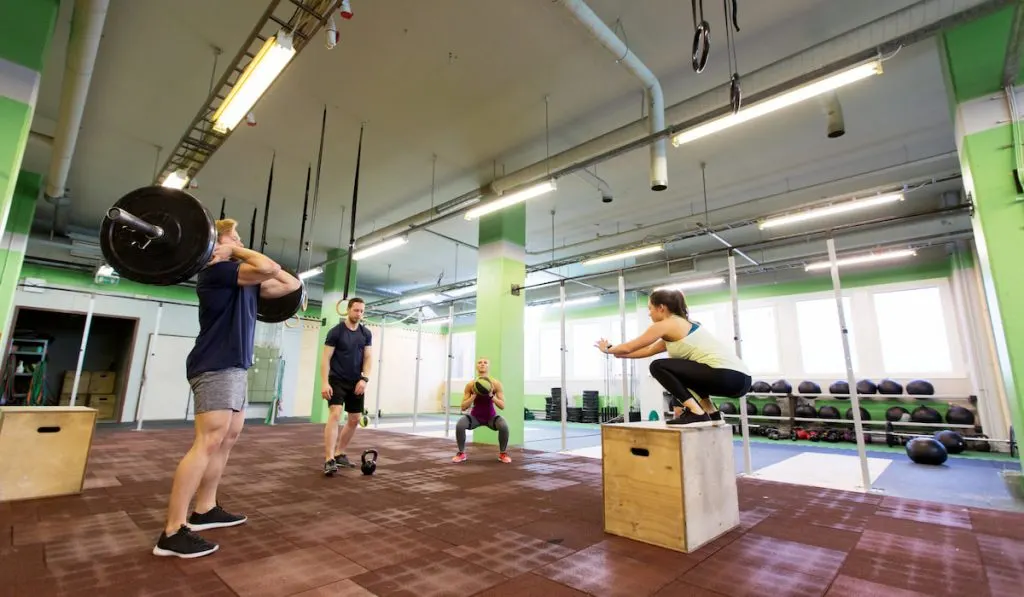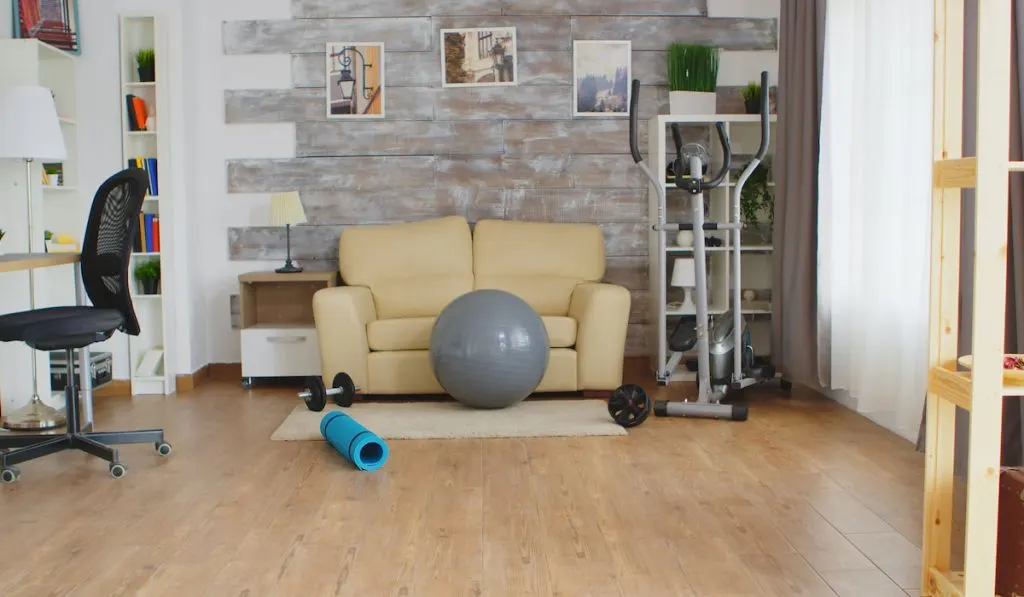It’s finally here- our beginner’s guide to set your fitness goals and learn how to be consistent with pursuing them! Ready to check it out?
Firstly, Why Should I Start a Fitness Journey?
Sure, everyone says it’s a great thing, but… Why exactly should you set on this journey? It’s really not that easy as it may look at first, and who knows if you’ll get the results you wanted.
Finding the right answers and listing the reasons for setting your fitness goals is essential to stick to your plan even when you don’t feel like doing it.
Although people usually decide to change their workout and diet habits because they want to look better, after starting, most of them realize it’s something that makes them feel good about themselves, even if they don’t end up looking like perfectly shaped people from headlines.
First of all, there’s a sedentary lifestyle.
Many people have an office job which brings lots of struggles with health as well as back issues due to 8 or more hours of sitting, which is far from our natural position.
It’s not just about your back, bones, weakened muscles, or something you immediately notice; research has shown sitting for longer periods of time brings numerous other health issues such as obesity, increased blood pressure, higher blood sugar, abnormal cholesterol levels, etc.
So, improving your health may be the first good reason to start.

Other than that, exercise makes you feel good, helps with improving sleep, and strengthens your immunity. Physical activity delivers valuable nutrients and oxygen to your tissues as well as promotes the function of your cardiovascular system.
Working out on regular basis also boosts your energy and helps with self-confidence. Most of us will never look like people from headlines, but, when you spend some time on your fitness journey, you’ll realize it’s really not the ultimate goal there.
Taking care of your body changes the perspective of it, which is something that has a positive effect on the state of your mind too.
You’re often moody, irritated, or stressed out?
Yup, exercise is something that improves your mood too. Even though the look is not the ultimate goal, it’s still a quite nice result you get out of this venture. If you have some more reasons to go for it – sure, add them, why not?
When you collect all of them, write the list down on a few pieces of paper. Leave those on visible spots to encourage you not to give up when you’re struggling with the lack of motivation. How about near your couch or in the cabinet where you keep sweets?
Find Out What Type of Exercise You Want To Pursue
This can be tough, especially for beginners. Sometimes you may even feel motivated, but also pretty confused and not sure where to start.
There are numerous possibilities out there as well as plenty of different fitness routines or regimens. It’s important to find one that suits your needs, personality, and goals. How exactly you should do that?

The ideal solution would be visiting the gym and hiring a professional coach that can explain how to perform certain exercises and set the fitness plan you’re later going to stick to.
It’s not something only celebrities do; most fitness trainers have approachable prices these days, adjusted to all the people out there willing to change their lives and improve their habits.
However, be careful about the choice over there as well. Look for recommendations, ask about their educational background or check their work history on the internet.
Not everyone who charges for fitness services is a professional, so always try to do a little research on your own to check if that person is worth paying for.
If this is too expensive for you, try doing research on your own. For instance, maybe you have some family members, friends, or colleagues that can give you some basic tips, show workouts, or advise what to inform about.
Do research on your own too; take a notebook, write down interesting things, compare the information you found on different sources.
Try to choose valuable fitness-related sites as well as tips that come from real professionals. Internet is a place where literally everyone can post, so prepare to face many self-proclaimed “experts” out there.
They may even know something about a workout, but, for instance, don’t have any educational background. Therefore, they are not quite familiar with the human body, potential risks, or even injuries that may occur if you don’t perform an exercise properly.
No matter which option you choose, listen to your body and always pay attention to how you feel during and after the workout.
If you experience knee or joints issues, the possibility you’re doing it wrong is pretty high. Muscle fever is a normal thing most of us go through after a good workout, but you need to learn how to distinguish that kind of pain from one that tells you you’re harming your body.
Find A Time For Workout, Even If It’s Only 10 Minutes A Day
Okay, you did it; you wrote goals, informed yourself, and set different types of training that will be in your initial fitness plan.
You even bought some nice workout clothes, which means everything is ready. Well, everything besides… At which time of the day should you squeeze your new fitness routine?
Everyday life is busy. It’s not easy to keep your house clean, cook, take care of family, have a full-time job, meet friends, or cover some other activities. Whether you enjoy them or not, they still take time, which leaves fewer hours for exercise.
Sure, that’s the bad news.
The good news is you can really start with 10 minutes a day only, and still positively impact your health and body.
It’s way harder to go from 0 to 10 minutes than from 10 to 50 minutes when it comes to any activity – and that includes a workout, too.
Set realistic goals you know you’ll be able to stick to rather than filling your list with those advanced ones you’ll postpone for months.
If you remember to put on your workout clothes every day for those 10 minutes, over time you’ll easily motivate yourself to prolonge the exercise and make more and more out of it.
Other than that, taking 10 minutes a day to exercise really takes away all the excuses about not having enough time to do the workout. That leaves more time to face the other excuses, though.

Make Weekly Plan
Okay, you’ve finally started and managed to do 10-minute exercises for two weeks already. It’s great you’re consistent with workouts, but, true, that’s simply not enough. So, what next?
Make a plan to effectively exercise 3-4 times a week. Short 10-minute training sessions are a good transition and something that builds good habits, but to experience the results, you need to push a little harder.
Choose days that fit you the most, and see if you can take 1-2 hours to do the proper training. That doesn’t mean you’ll exercise for 2 hours straight. You may want to do your warmup at the beginning and stretching after your training without rushing.
On the other hand, maybe you’ll end up in such a good mood, you’ll just want to carelessly dance and listen to your favorite songs after the workout is done. Of course, 1-2 hours is just a proposal – find the amount of time you can fit into your schedule.
Add those workouts to your calendar and try to stick to the schedule, despite distractions or other opportunities.

Make It Long-Term
There are plenty of 30-day challenges and similar workout sessions that suppose to get you results in the shortest time possible.
No matter how tempting this may seem, try to avoid it. It’s the same as with diets – if you take one that brings numerous restrictions and promises quick results, be prepared you’ll get all the lost weight back faster than you think.
Our willpower is a limited thing, so it’s only a matter of time how long we can resist temptations.
Both workout and diet are things you can bring to a higher level only if you implement long-term habits. That means you can gradually implement all the changes as well as adjust them to your personality.
Some people prefer doing their workout in the morning, while others are fine with exercising after a work time. Think in the long term in order to stay consistent and stick to your fitness goals. It’s better to train twice a week for a longer period than give your best during the first three weeks and then stop.
Some Final Words
Despite all the plans you can make, prepare for lots of bad days waiting for you. It’s not just when you have plenty of stressful things going on.
It’s also a lazy, rainy day when all you want is to lie down on the couch and watch movies all afternoon. It’s okay to have it from time to time but don’t let it become an excuse to avoid a workout.
Remember when we talked about those 10 minutes of exercise a day? The fact your planned workout is that short makes it kinda easier to survive the decision to start. However, starting is the hardest part, so in most cases, you may positively surprise yourself by prolonging your workout.
If you really, really don’t feel like doing it, take a look into your cabinet with sweets – you may find some nice motivational note over there. Good luck!
Resources
- https://21ninety.com/10-attainable-health-fitness-goals-for-beginners
- https://networkhealth.com/grow-in-the-know/2020/07/ultimate-guide-to-beginners-fitness
- https://www.mayoclinic.org/healthy-lifestyle/adult-health/expert-answers/sitting/faq-20058005
- https://www.mayoclinic.org/healthy-lifestyle/fitness/in-depth/exercise/art-20048389
